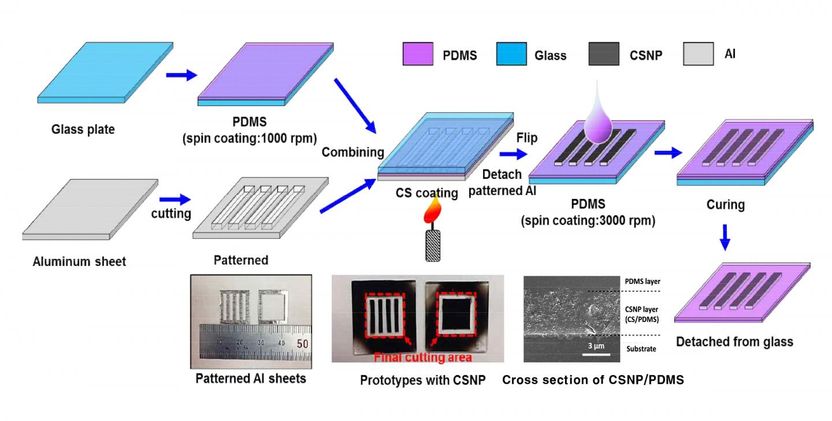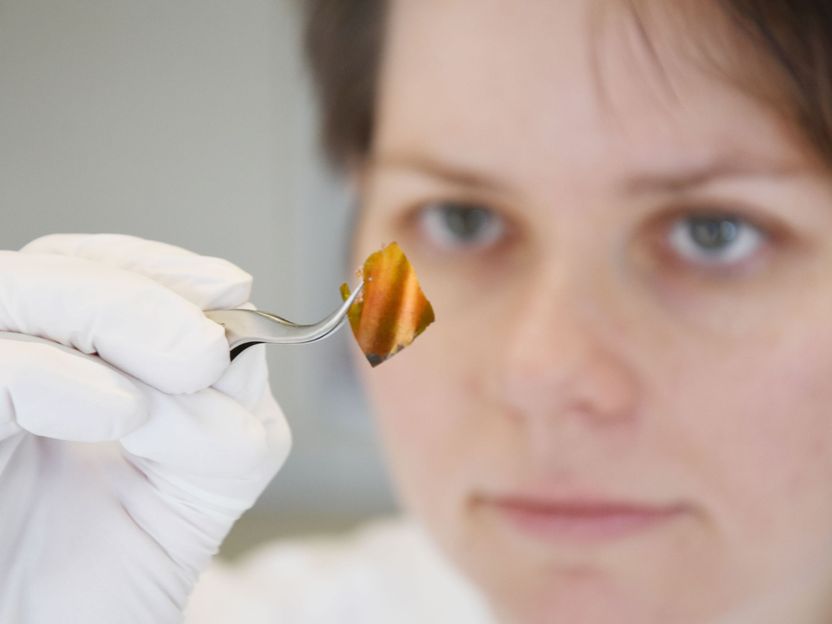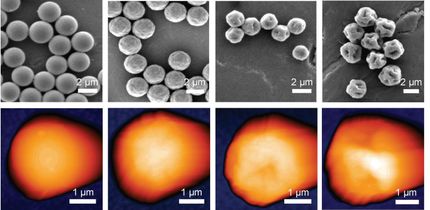Engineers identify how to keep surfaces dry underwater
Research team is first to identify surface 'roughness' required to achieve amazing feat
Imagine staying dry underwater for months. Now Northwestern University engineers have examined a wide variety of surfaces that can do just that - and they know why.
The research team is the first to identify the ideal "roughness" needed in the texture of a surface to keep it dry for a long period of time when submerged in water. The valleys in the surface roughness typically need to be less than one micron in width, the researchers found. That's really small - less than one millionth of a meter - but these nanoscopic valleys have macroscopic impact.
Understanding how the surfaces deflect water so well means the valuable feature could be reproduced in other materials on a mass scale, potentially saving billions of dollars in a variety of industries, from antifouling surfaces for shipping to pipe coatings resulting in lower drag. That's science and engineering, not serendipity, at work for the benefit of the economy.
"The trick is to use rough surfaces of the right chemistry and size to promote vapor formation, which we can use to our advantage," said Neelesh A. Patankar, a theoretical mechanical engineer who led the research.
"When the valleys are less than one micron wide, pockets of water vapor or gas accumulate in them by underwater evaporation or effervescence, just like a drop of water evaporates without having to boil it. These gas pockets deflect water, keeping the surface dry," he said.
In a study Patankar and his co-authors explain and demonstrate the nanoscale mechanics behind the phenomenon of staying dry underwater.
In their experiments, the researchers used a variety of materials with and without the key surface roughness and submerged them in water. Samples with the nanoscale roughness remained dry for up to four months, the duration of the experiment. Other samples were placed in harsh environments, where dissolved gas was removed from the ambient liquid, and they also remained dry.
Original publication
Original publication
Paul R. Jones, Xiuqing Hao, Eduardo R. Cruz-Chu, Konrad Rykaczewski, Krishanu Nandy, Thomas M. Schutzius, Kripa K. Varanasi, Constantine M. Megaridis, Jens H. Walther, Petros Koumoutsakos, Horacio D. Espinosa & Neelesh A. Patankar; "Sustaining dry surfaces under water"; Scientific Reports; 2015
Organizations
Other news from the department science

Get the chemical industry in your inbox
By submitting this form you agree that LUMITOS AG will send you the newsletter(s) selected above by email. Your data will not be passed on to third parties. Your data will be stored and processed in accordance with our data protection regulations. LUMITOS may contact you by email for the purpose of advertising or market and opinion surveys. You can revoke your consent at any time without giving reasons to LUMITOS AG, Ernst-Augustin-Str. 2, 12489 Berlin, Germany or by e-mail at revoke@lumitos.com with effect for the future. In addition, each email contains a link to unsubscribe from the corresponding newsletter.
Most read news
More news from our other portals
Last viewed contents

Laser-based ultrasound approach provides new direction for nondestructive testing
Merck KGaA starts world-wide launch of Chromolith HPLC Columns - The new HPLC column can separate the most complex substance mixtures into their components at maximum speed.
Two in one solution for low cost polymer LEDs and solar cells
Angiotensin_receptor
Asbestos,_Quebec

High-performance combination: Batteries made of silicon and sulphur - Research team of material scientists present an innovative, sustainable energy storage concept

We Wouldn’t Be Able to Control Superintelligent Machines - Would the AI cure cancer, bring about world peace, and prevent a climate disaster? Or would it destroy humanity and take over the Earth?
LyondellBasell to Close LDPE Unit at Carrington, U.K.

Rudolph Logic Systems GmbH - Sarstedt, Germany

Challenging counterfeit products with rare earths - New marking technique could halt product piracy
Merck KGaA and Nano-Terra Announce Extension of Nanotechnology Solutions Alliance




























































